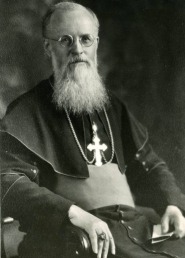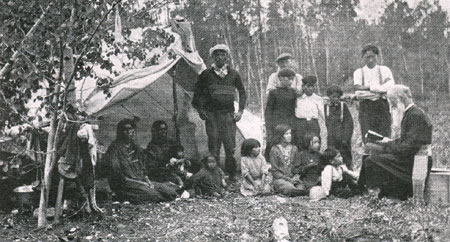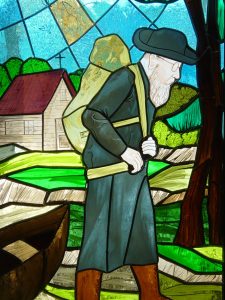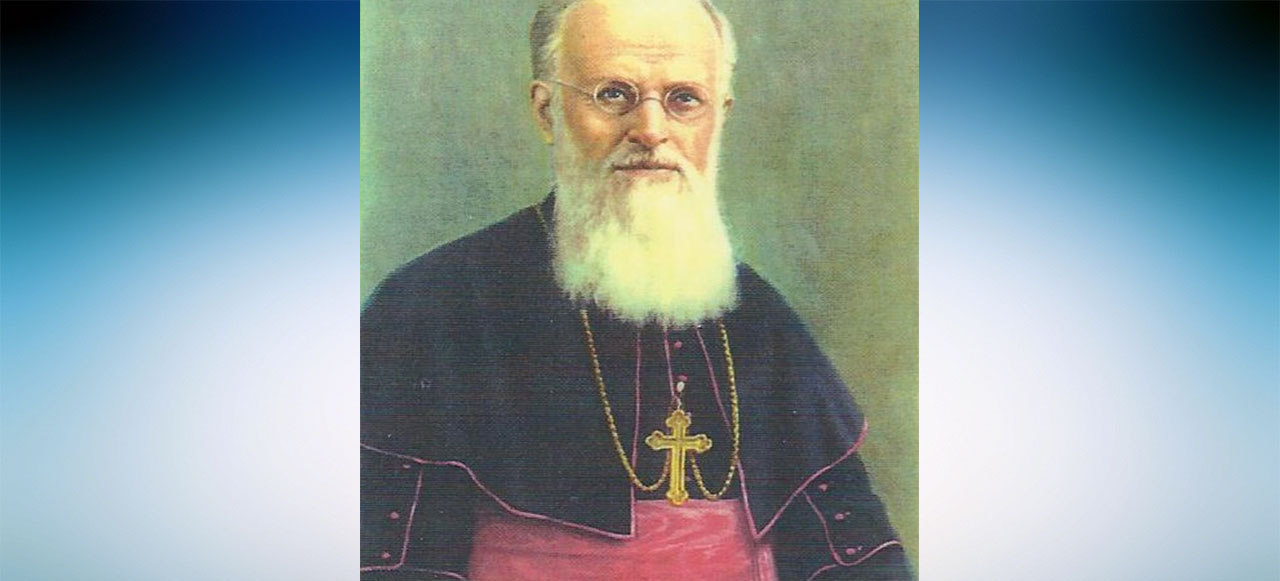Biography

For sixteen years, Fr. Charlebois lived alone at the mission of St. Joseph at Fort Cumberland in northern Saskatchewan in the Diocese of Saint Albert, working amongst the people of the First Nation. In 1900, he was given administrative responsibility for the surrounding missions, including one at The Pas, Manitoba and most of the lower Saskatchewan River. In 1903, he went to the Industrial School at Duck Lake, Saskatchewan, where he put the financially-troubled facility on a firmer economic basis.

Photo credit: www.crc-canada.net
Named Vicar Apostolic of Keewatin, Manitoba, Ovide Charlebois received his Episcopal Consecration with the Titular See of Berenice on November 30, 1910. He was installed on the following March 7, 1911n and resided in The Pas where he remained for the rest of his life.
After a relatively stable life of some twenty years, Bishop Charlebois found himself, at forty-eight, obliged to travel by canoe or dog-sled for his pastoral visits. We find in his journal a page which gives us a little idea of the difficulties encountered during his first pastoral tour, in 1911. He wrote: “I covered 2000 miles (3200 km) by canoe and 50 miles (80 km) on foot through the forest. I slept on the ground 60 times, under the protection of the small tent in which I celebrated Mass so often. I visited 14 missions, totaling 4500 Catholics. Six of these missions had never been visited by a bishop. I confirmed 1100 Amerindians whose fine dispositions greatly edified me.” He made similar voyages tens of times.

Bishop Charlebois was so impressed that he sent a request to Rome, signed by 226 missionary bishops from all over the world, asking for the grace to declare Saint Theresa of the Child Jesus patroness of all the missions in the world. In 1927, Pope Pius XI responded favorably to this request.
The bishop labored at the difficult task of organizing his vast vicariate with patience and courage, until he died at The Pas, aged 71, on 20 November 1933, of a chill sustained while travelling by dog team to a community south of the town. He was buried in a small Roman Catholic cemetery of The Pas overlooking the Saskatchewan River. His remains were transferred to the Our Lady of the Sacred Heart Cathedral in 1955.
Pope Francis titled him as Venerable on 28 November 2019.
